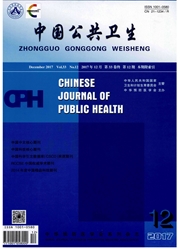

 中文摘要:
中文摘要:
目的进行甲型肝炎疫情风险数据挖掘并形成关联规则。方法传染病资料来源于辽宁省朝阳市疾病预防控制中心,收集该市1981—1994年的甲型肝炎发病率数据。气象资料由该市气象站提供,内容包括各年相应的13项月气象指标。首先将气象指标和传染病数据离散化为计数资料.分别为高、中和低水平,将源数据库映射为挖掘数据库;然后设置最小支持度为0.1,最小置信度为0.8,利用Apriofi算法进行关联规则挖掘.最后由公共卫生专家解释及检验所产生的规则。结果共形成203个强关联规则。这些强关联规则中蕴含着甲型肝炎发病与季节、气温、气压、降水量、蒸发量等影响因素之间的关联关系。结论本方法有利于将抽象的数理统计理论转变为实用的关联规则来指导疾病预防控制实践.具有一定的推广应用价值。
 英文摘要:
英文摘要:
Objective To detect potential factors which may cause the outbreaks of hepatitis A and estimate their risk and tendency. Methods The meteorological data and hepatitis A surveillance data were collected. Database for mining were constructed by mapping from source data to spreadsheet format file, and then the method of apriori algorithm was applied to find all the strong association rules by setting support as 0.1 and confidence as 0.8. Results These obtained associations revealed the relation between risk of infectious disease and influencing factors such as season, air pressure, temperature, precipitation and amount of evaporation. Conclusion The association rules method is proved to be helpful in decision - making for infectious disease prediction and control.
 同期刊论文项目
同期刊论文项目
 同项目期刊论文
同项目期刊论文
 Incorporating biological knowledge into distance-based clustering analysis of microarray gene expres
Incorporating biological knowledge into distance-based clustering analysis of microarray gene expres 期刊信息
期刊信息
